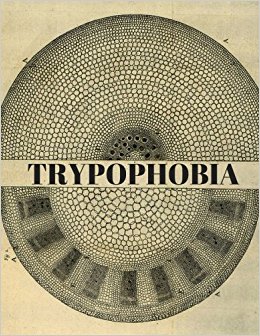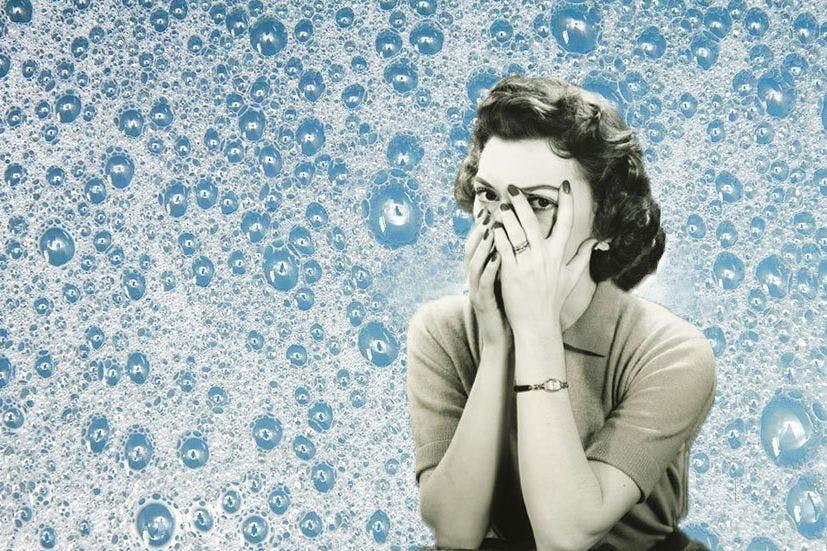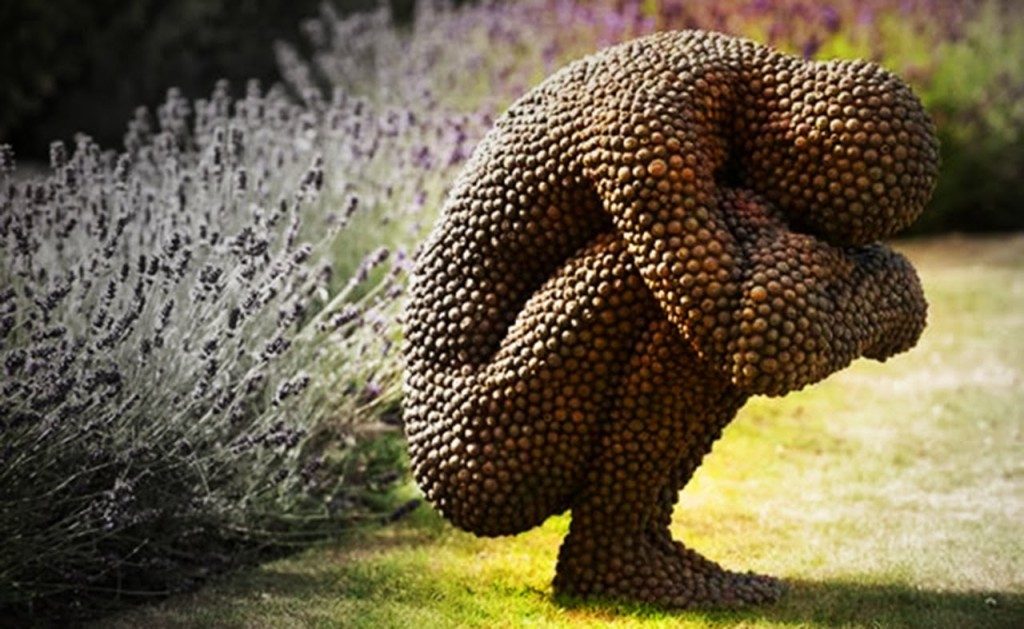What Triggers Trypophobia?

Trypophobia Concept Art
The evolution of the human race has been highly influenced by a stable natural environment and visual regularities in the forms of nature. Our visual system has become accustomed to the order or regularity that surrounds us. When we are faced with irregular changes to the norm, discomfort, anxiety or even fear and develop can develop as a result. When we think of phobias, we usually associate them with very mainstream fear inducing mediums such as height, spiders, snakes, clowns, etc. One of the less common known phobias that is quickly gaining widespread adoption is Trypophobia, or , the fear of clusters of holes. This term was first introduced in 2005. The word itself originates from the Greek root “trypos”, which means ‘punching, drilling and/or drilling holes’, and is often described as the fear of clusters of holes. The inducing stimuli can be any kind of image containing irregular patterns of holes. Despite it’s official recognition as a phobia, it has become one of the most discussed topics among psychologists these days. Even though it hasn’t been officially accepted by American Psychiatric Association, 15% of world’s population claims to have some debilitating kind of fear of holes.
Trypophobia has received a substantial amount of media attention attention recently. Since the topic has been revealed to a wider audience, people wanted to share their experience with this type of fear. One of the largest groups dedicated to this type of phobia was created on the social media network, Facebook, where over 30,000 people joined to discuss their symptoms and exchange valuable information. Sufferers of this phobia call themselves Trypophobes. These people or patients who develop this kind of disease, display a marked fear or disgust and experience distress when faced with Trypophobic trigger.Some sufferers have such an adverse reaction to stimuli they are unable to perform some everyday activities.
What will trigger my Trypophobia?
There are several types of Trypophobia triggers that sufferers may want to look out for:
– Some people have the fear of holes on different objects such as dried flowers, lotus seed heads, and spices.
– People can develop fear of cluster of holes that normally occur on rocks or in the ground
– Images of worms or insects digging through fruit or vegetables can trigger the attacks
– Cheese, honeycomb, holes in meat, vegetables or fruit or some other food can also cause a panic attack
– One of the most difficult triggers is the image of worms digging through the human skin, skin pores, bone marrow, veins in the flash or some skin diseases like eczema, chicken pox, measles, etc.
Although the exact mechanisms that lead to the occurrence of this disorder have not yet been discovered, some of the most probable are deep emotional problems linked to some childhood experiences, traumatic experiences, the danger of falling into the holes, watching other be afraid of it, and various biological factors. Some scientists believe the images of these holes remind us of different diseases or danger when encountering animals. However, it seems that images of holes on natural and biological materials and substrates cause much more difficult reactions and panic attacks than images of the cluster of holes on the ground. Most phobias occur for no apparent reason. The fear occurs can occur anytime in an individual’s life and usually occur during early in childhood and lasts the span of one’s life. It’s the combination of internal and external factors that have the greatest impact on an individual.
Trypophobes experience different kinds of symptoms
In the research paper entitled “The Fear of Holes”, Cole and Wilkins (2013) first introduced the terms Trypophobia and Trypophobes to the world of science. They stated that the most interesting fact about this type of phobia is that the induced stimuli are usually images that show no threat to an individual. According to the information provided by this scientific study, it is the seed head of a lotus that is most commonly associated with the fear of cluster of holes, even though lotus is a harmless plant used in Chinese herbal medicine. The researchers speculate that this kind of disease may have an evolutionary basis — the fear of clusters of holes may be happening due to the visual feature of animals that humans have learned to avoid as a matter of survival. In the light of this, people tend to experience symptoms which can be correlated to the survival instincts.

Trypophobia Trigger
In 2015, An Trong Dinh Le, a doctor from the University of Essex published a Ph.D. thesis entitled “An Exploration Of Trypophobia.” He conducted a detailed research about the symptoms occurring in patients who experience the fear of holes. He collected 200 individual testimonials provided by the members of a Facebook supporting group for Trypophobes. One of the members reported: “I have experienced this (Trypophobia) my entire life and can give specific examples going back to when I was about 4 years old. It is definitely a phobia because it is highly irrational and can be triggered by the most mundane objects and patterns. It also sets me up with very invasive thoughts that make it hard for me to work or socialize once I’ve been triggered. I’ve been trying to describe this issue to people my whole life, and I had no idea it had a name.” Even a biology student wrote that he was horrified learning about the patterns in a cell. When he finally gathered all the necessary information, he divided the symptoms into three categories:
1. Cognitive-related symptoms like fear, anxiety, discomfort, aversion, disgust,
2. Skin-related symptoms like skin crawling, itchiness, skin rash, and
3. Physiological symptoms such as increased heart rate, nausea, vomiting, feeling of choking and trouble breathing etc.
The conclusion was that these types of reactions were caused by the clustering nature of the objects and varied from one individual to another. Trypophobes could see the images for a certain period and then they start to think about covering or removing that image. They can see the image as constantly rolling in front of their eyes, which slowly leads to worsening of symptoms and sometimes to panic attacks. Some will physically remove the trigger; others will turn their heads to the other side and won’t look at it.
Since there hasn’t been enough scientific researches about this topic, there are no adequate medical tests to diagnose this disorder. Even the official medicine has no answer to these kinds of problems. Most of the people are being rejected and ridiculed when talking about trypophobia, because even the doctors sometimes don’t take them seriously. However, some modern medical approaches in psychology give hope that things will improve in the future.
How do I treat my Trypophobia?
Many researchers have shown that modern psychological techniques for treating different kinds of phobia give better results than techniques based only on conversations. There is a significant increase in the usage of Internet in search for self-treatment. The most common type, and apparently, one of the most effective types of treatment is exposure therapy. It involves a gradual exposure to one of the triggers and manipulating its contrast level. This therapy allows Trypophobes to control the anxiety and leads to an ever lesser sense of anxiety when he sees something that could cause a panic attack. Similar to the exposure therapy, cognitive behavioral therapy or CBT combines these techniques with randomly displaying images which trigger the symptoms and images that can calm them down.

Trypophobia leaves its sufferers helpless
Due to the fact that some phobias are recognized as mental disorders, there is a general need for mental health aid. A new method which was introduced recently, called systematic desensitization is to become popular among people fighting against the fear of cluster of holes. Basically, the purpose of this therapy is to teach the patients how not to feel the anxiety, just like they are taught to feel it while being exposed to certain kind of trigger. When we feel anxious about certain situations, we avoid dwelling on it or even thinking about it, but while applying this new method, we are being taught to imagine the stressful situations in a relaxed environment.
The method of modeling allows the patients suffering from this kind of phobia to see other people with similar issues participating in the exercises or tasks that can trigger symptoms. The main goal of this therapy is to see how other people behave calmly in stressful situations.
Even though Trypophobia wasn’t officially registered as a disease, patients can visit a psychiatrist or seek counseling. There is a chance that your psychiatrist will prescribe medicines that will help you combat the fear. Medicines which are usually prescribed are antidepressants, tranquilizers or beta blockers which reduce the adrenaline’s influence on the body.
The results of the aforementioned researches and therapies have shown that Trypophobia can be considered as a mental disease that can cause impairment to our productivity and everyday functioning. The more you are triggered, the more damage these stressful situations can cause to an individual. People can’t get rid of their fears instantly, but what matters the most is not to give up. This mental illness is treatable and, once a patient is cured, they will be able to look at trypophobic objects and just walk away and forget about it. Talking to others or someone you can trust can help trypophobs to overcome the fear of cluster of holes. Fear is only as deep as the mind allows it to be.
References
-http://mentalfloss.com/article/67867/what-trypophobia-and-it-real
-http://www.fearof.net/fear-of-holes-phobia-trypophobia/
-https://mavcure.com/trypophobia-fear-holes-skin/
-https://www.psychologicalscience.org/news/releases/fear-of-holes-may-stem-from-evolutionary-survival-response.html
-https://www.facebook.com/groups/3318322299/about/
– “Fear of Holes“, G. Cole, A. Wilkins, University of Essex, 2013, available at https://nature.berkeley.edu/garbelottoat/wp-content/uploads/Le-et-al-2015-v2.pdf
– “An Exploration Of Trypophobia” An Trong Dinh Le, University of Essex, 2015, available at http://repository.essex.ac.uk/16352/1/Thesis%20LE.pdf

